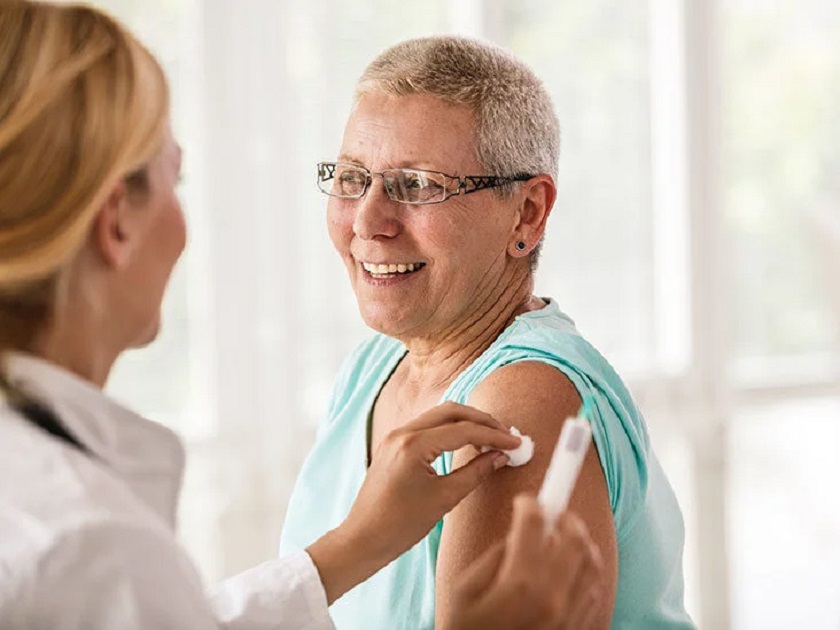
The Philippines experiences its coldest months from December to February, but with the cooler temperatures comes an increase in weather-related illnesses such as pneumonia. Pneumonia, a serious disease caused by bacteria, viruses, or fungi, can affect people of all ages, particularly unvaccinated children. The combination of cold temperatures and low humidity levels can weaken the immune system and make individuals more susceptible to respiratory infections during these months.

To protect against pneumonia, individuals should get vaccinated, maintain good personal hygiene, avoid contact with sick individuals, stay warm and dry, drink plenty of fluids, quit smoking, and maintain a healthy diet. According to Dr. Maria Margarita Lota, a specialist in Medical Microbiology at the University of the Philippines’ College of Public Health, vaccination is one of the most effective ways to combat pneumonia, which is a leading cause of death in children under five years of age. She emphasizes the importance of protecting children by utilizing the available vaccines for infectious diseases like pneumonia, in addition to proper hygiene and nutrition.
Right PCV against the Right Strains
Dr. Lota, a specialist in Medical Microbiology at the University of the Philippines’ College of Public Health, emphasized the importance of considering several factors before introducing a pneumococcal conjugate vaccine (PCV) under the National Immunization Program (NIP). Alongside cost-effectiveness and programmatic characteristics, she highlighted that a PCV should be able to protect against strains that are prevalent in the Philippines.
“When considering the inclusion of a PCV in the NIP, we must take into account the serotypes that exist in the community. We must directly target these serotypes, or ensure that there are reports of the PCV providing cross-protection,” she said.
In 2020, the Health Technology Assessment Council (HTAC) of the Department of Health recommended the use of PCVs that protect against 11 important strains which accounted for 48% of Invasive Pneumococcal Disease (IPD) cases found in the Philippines, based on local surveillance data of the Research Institute of Tropical Medicine (RITM) from 2012-2019.
“By knowing which serotypes are circulating and which brands of PCVs can address them, we can significantly prevent pneumonia in the country. Currently available PCVs can address 48% of circulating serotypes in the Philippines,” Dr. Lota said.
However, Dr. Lota also acknowledged the need to improve surveillance of circulating strains of pneumonia in the Philippines. “Different countries have different circulating serotypes. In our anti-microbial resistance surveillance program, we have identified several serotypes causing pneumonia, but the problem is that there are low reports of isolates submitted to RITM. This is a barrier to truly understanding the prevalent serotypes in the country,” she said.
Real-worldExperienceto combatVaccineHesitancy
Despite the availability of PCV (pneumococcal conjugate vaccine) in the National Immunization Program (NIP), a significant number of cases of vaccine-preventable diseases, such as pneumonia, continue to occur due to parents’ hesitancy to vaccinate their children. This leads to fewer infants being brought to health facilities to receive the vaccine.
According to Dr. Lota, a root cause of this hesitancy can be attributed to the controversy surrounding the dengue vaccine in 2016, which has led to a low uptake of vaccines in general. To address this issue, Dr. Lota suggests that a PCV should have sufficient experience and accessible real-world evidence before being implemented in the Philippine NIP. This will give parents confidence that the vaccine is safe and effective for their children.
As an example, Dr. Lota mentioned the slow acceptance of COVID-19 vaccines when they were first introduced in the Philippines. Many parents were hesitant to vaccinate their children due to a lack of real-world evidence showing the safety and effectiveness of the vaccine.
In October 2020, the Health Technology Assessment Council (HTAC) released a final priority list of health technology topics for inclusion in the Philippine National Formulary (PNF), which includes PCV. Currently, there are three PCVs pre-qualified by the World Health Organization: PCV13 and two kinds of PCV10: PHID-CV and SIIL-PCV. In 2020, HTAC reviewed PHID-CV and PCV13, and assessed them as suitable to address the 11 important strains in the Philippines.





